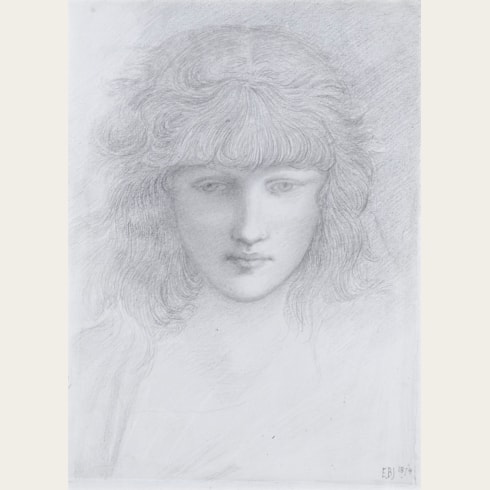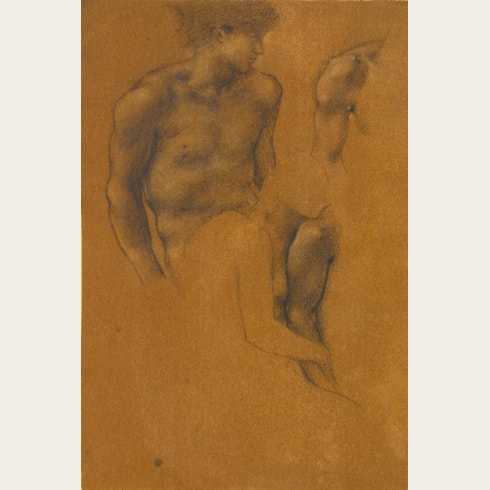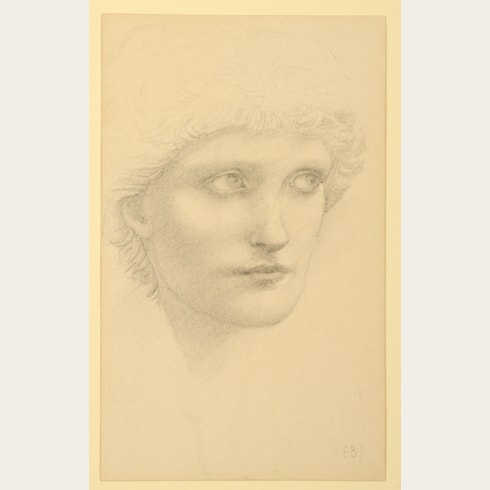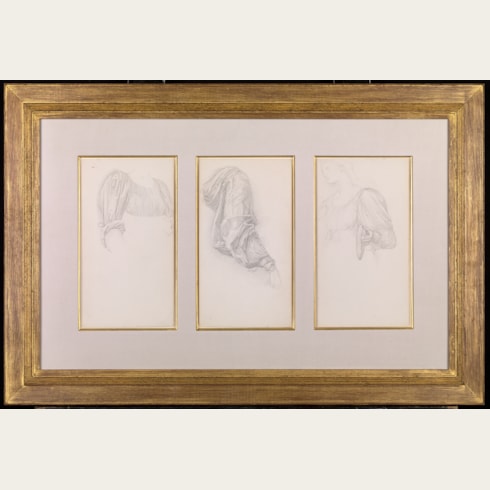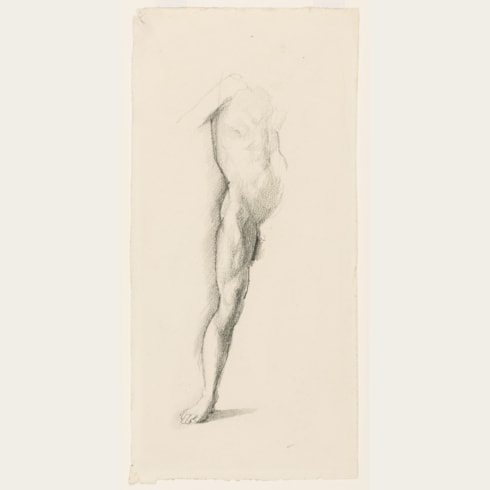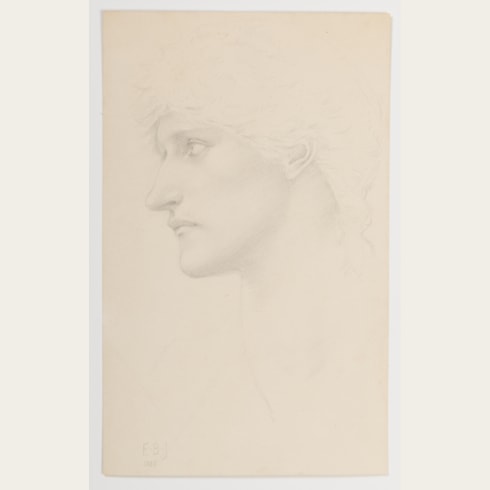Edward Coley BURNE-JONES
(Birmingham 1833 - London 1898)
The Angel of the Annunciation
584 x 288 mm. (23 x 11 3/8 in.)
ACQUIRED BY THE NATIONAL GALLERY OF CANADA, OTTAWA.
Writing about The Annunciation at the time of its exhibition at the Grosvenor Gallery in 1879 was Oscar Wilde, who was particularly taken with the figure of the angel; ‘through the branches of a tall olive tree, unseen by the Virgin’s tear-dimmed eyes, is descending the angel Gabriel with his joyful and terrible message, not painted as Angelico loved to do, in the varied splendour of peacock-like wings and garments of gold and crimson, but somewhat sombre in colour, set with all the fine grace of nobly-fashioned drapery and exquisitely ordered design.’
Other critics were particularly struck by the Italianate influence which they detected in Burne-Jones’s depiction of the angel. F. G. Stephens, writing in The Athenaeum, noted that ‘the robes of the angel are a rich purplish brown, and, in their long, nebular, multiform, and gracefully adapted folds form drapery like that we find throughout the School of Mantegna, the antetype of Jones’s art, its ancient illustrious example, which our own artist has not in any way copied. The action and expression of the messenger indicate at once the dignity of his nature and the noble respect he feels for the object of his ministration. There is in this figure a dash of greater beauty than Mantegna effected; a mood similar to that of Piero della Francesca pervades its high refinement and pure grace...’
As is true of most of Burne-Jones’s work, a number of preparatory pencil studies for the painting of The Annunciation are known. Compositional sketches for the painting are found in a sketchbook of 1876 in the Fitzwilliam Museum in Cambridge, which also houses three preparatory drawings for the painting, each dated 1878, including a sheet with three studies for the drapery of the angel and another drawing with studies for his right arm. The present sheet shows that Burne-Jones initially planned to depict the angel as holding a lily in his left hand and with his right arm lowered (as further evidenced by the studies of the drapery of the same arm in one of the Fitzwilliam drawings), while in the final painting the angel is depicted with both arms bent and his hands empty.
While the model for the Virgin in The Annunciation is known to have been Mrs. Leslie Stephen, the mother of Vanessa Bell and Virginia Woolf, the face of the angel is of an idealized, graceful type that Burne-Jones used in many of his paintings. A pencil study for the head of the angel, signed and dated 1879, was formerly in the McCormick collection, Dobbs Ferry, New York. The full-scale cartoon of The Annunciation, reworked in bodycolour and tempera several years later in 1887, is in the collection of the Castle Museum in Norwich, while a smaller, finished watercolour version of the painting is today in the British Museum.
The present sheet, newly rediscovered, is a fine example of the superb draughtsmanship of Burne-Jones, and displays all the grace, beauty and elegance that are characteristic of his art. Although a preparatory study for a major painting, the present sheet was developed to a degree of finish that suggests that it was also regarded by the artist as a finished work of art in its own right.
The particular inspiration of angels upon the artist is suggested by a comment he made to Oscar Wilde, who later recalled, ‘I remember once, in talking to Mr. Burne-Jones about modern science, his saying to me, ‘the more materialistic science becomes, the more angels I shall paint: their wings are my protest in favour of the immortality of the soul.’’
The leading member of the second generation of Pre-Raphaelite painters, Edward Burne-Jones studied at Exeter College, Oxford, where he met William Morris. The two were to remain lifelong friends and colleagues, with Burne-Jones executing designs for stained glass windows, ceramic tiles and tapestries for Morris and Company for more than thirty-five years. Another close friend was Dante Gabriel Rossetti, who gave Burne-Jones some of the little artistic training he received, otherwise being largely self-taught. From early in his career Burne-Jones enjoyed a measure of success, particularly as a designer of stained glass panels. In 1859 he made the first of four trips to Italy, a country whose art he found of considerable inspiration throughout his life. In 1877 he showed a total of eight paintings at the inaugural exhibition at the Grosvenor Gallery, established as a more radical alternative to the Royal Academy. The success of these pictures, and his continued participation in the yearly Grosvenor exhibitions, established Burne-Jones's reputation as a leader of the Aesthetic movement. His fame also spread to Europe, and in particular Paris, where his painting of King Cophetua and the Beggar Maid was greatly admired at the Exposition Universelle of 1889.
A passionate and prolific draughtsman, Burne-Jones produced countless preparatory studies and cartoons for his paintings, as well as drawings intended as independent works of art in their own right, in black and red chalk, pencil, pen and watercolour. His drawings were, indeed, of arguably greater significance to him than his finished paintings; as John Christian has noted, Burne-Jones ‘was always a draughtsman first and a painter second.’ Similarly, the artist’s friend Graham Robertson wrote that ‘He was pre-eminently a draughtsman, and one of the greatest in the whole history of Art…as a master of line he was always unequalled; to draw was his natural mode of expression – line flowed from him almost without volition.’ Although he occasionally gave drawings away as presents, and also sometimes exhibited them in public, Burne-Jones seems to have kept most of his drawings in his studio until his death, after which they were dispersed.
Provenance





